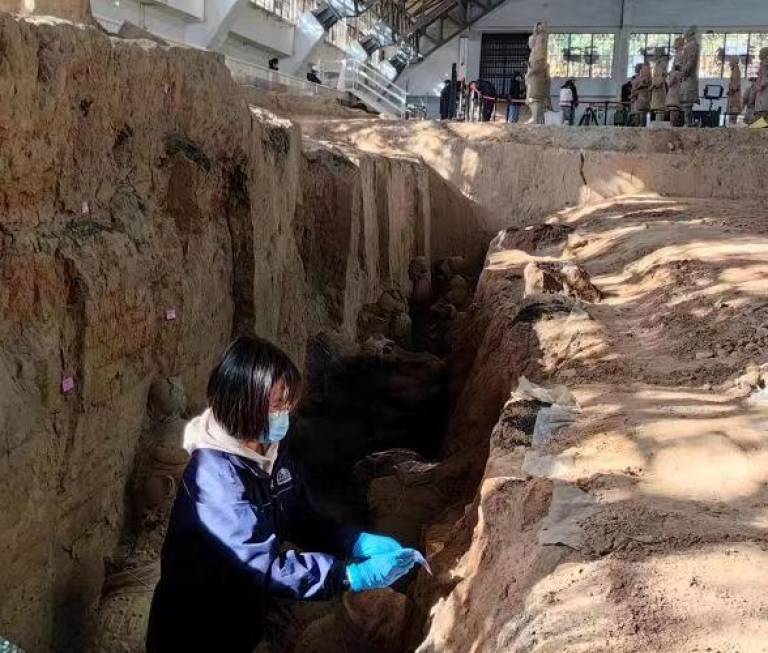Wood use in the Terracotta Army pits: a new LAHP-funded PhD project
7 March 2023
The geographical and environmental information can be extracted from the charred remains found in the Terracotta Army pits and other ancillary facilities.

In order to explore the wood use in the construction of the First Qin Emperor’s mausoleum, the wood taxa composition, selection patterns, and geographical origin need to be discussed based on data of charred remains from the five target ancillary facilities, namely the Terracotta Army pits 1 and 2, K9901 (the Acrobat Pit), K9801 (the Stone Armour Pit), and M1. The goal is being achieved step by step.
Wood charcoal taxonomic identification skills, literature reading, and methods validation are the main elements of what has been done in the past year, so that the subsequent analysis of samples and the interpretation can be built on.
Wood and charcoal reference collection at UCL Institute of Archaeology facilitated the practice of taxonomic identification. Literature on wood anatomy, anthracology, wood carbonisation, forestry, historical ecology, vegetation history of relevant regions, spatial statistics, and stable isotope provided a variety of perspectives for an in-depth understanding of the research context and future interpretation of the data.
Forty pilot wood charcoal samples from the site have been used to test and improve the research design and collect initial data. Most of the samples are identified as Abies sp., Picea sp., and Tsuga sp. from the family of Pinaceae, and three of them belong to different broadleaf genera. Microscopic features show that insects damage is common for the original timbers, and biodegradation had taken place either before or after the carbonisation. The infrared spectra of samples after removing visible dirt display a rather clean feature with no obvious contamination, but the dominant characteristic peaks indicate an aged composition signature, and this has also been proven by the carbon content and hydrophilia of samples. The stable carbon and nitrogen isotope analysis is in progress to explore the possibility of extracting geographical and environmental information from the charred remains. A potential method that can remove the carbonisation effect and make the isotope data comparable is in the planning stage. Relevant results are planned for publication once the pilot study is completed.
Callus tissue possibly caused by a wood-boring insect or woodworm.
Sample collection and analysis for the research programme were about to begin in November 2022. The fieldwork is taking place in the Emperor Qinshihuang’s Mausoleum Site Museum, China. Once sufficient data are collected, following analysis and interpretation will be carried out in London.
Ying Yang is PhD candidate at UCL Institute of Archaeology and researcher at Emperor Qin Shihuang's Mausoleum Site Museum.
 Close
Close

